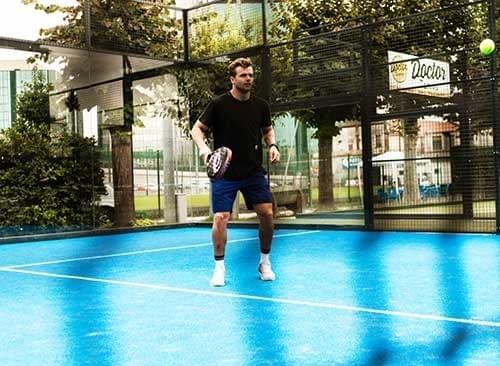

The Rise of Padel Ball Courts A New Wave in Racquet Sports
In recent years, padel has emerged as one of the fastest-growing sports worldwide, captivating players and spectators alike with its unique blend of tennis and squash. This exciting game is played on a court that resembles a mini tennis court but is enclosed by walls, allowing for a dynamic and fast-paced gameplay that is inclusive for all ages and skill levels. The popularity of padel has fueled the construction of dedicated padel ball courts, making it accessible for enthusiasts around the globe.
Understanding the Padel Court
A standard padel court measures 20 meters long and 10 meters wide, surrounded by glass walls and mesh fencing which are integral to the gameplay. The playing surface is usually made of artificial grass or concrete, offering a firm yet forgiving surface that enhances the gaming experience. The walls can be used strategically by players to rebound the ball, similar to squash, adding an additional layer of skill and strategy to the game.
What sets padel apart is its scoring system, which is similar to tennis, but the gameplay allows for a more social and interactive experience. Matches are typically played in doubles, fostering a collaborative spirit and making it a perfect choice for friends and family looking for an engaging outdoor activity.
The Growing Popularity of Padel
The growth of padel can be attributed to several factors. First and foremost, its accessibility is a significant draw. Unlike traditional tennis, which often requires extensive training and a high level of physical fitness, padel is easy to learn, making it an attractive option for beginners. The shorter court and the ability to play off the walls contribute to a more relaxed pace, allowing players to enjoy the game without the fear of losing points quickly.

Additionally, the social aspect of padel cannot be overlooked. The doubles format promotes teamwork and interaction, making it an ideal sport for gatherings and community events. As more people become aware of the health benefits associated with regular exercise and the advantages of social sports, padel courts are seeing increased demand.
Construction of Padel Courts
The construction of padel ball courts has become a lucrative venture for sports facility developers and entrepreneurs. Many clubs and recreational centers are integrating padel courts alongside traditional sports facilities to attract a broader audience. The relatively small size of a padel court allows for more efficient use of space, making it possible for facilities to offer multiple courts even in urban environments where land is at a premium.
The investment required to build a padel court is also comparatively lower than that of other racquet sports facilities. With adjustable lighting and the option to play year-round, clubs can maximize their revenue potential. Furthermore, many organizations are beginning to host leagues and tournaments, further popularizing the sport and attracting more players.
Conclusion
As padel continues to gain traction across the globe, the establishment of dedicated padel ball courts is likely to rise. These courts not only provide a space for players to improve their skills and enjoy the game but also serve as community hubs fostering social interaction and a love for sport. With its fast-paced nature, social interaction, and accessibility, padel is set to become an enduring part of the sports landscape. Whether you are a seasoned athlete or a curious newcomer, stepping onto a padel court opens the door to a world of fun, fitness, and friendship.
High-Performance Industrial Flooring Solutions China Paddle Tennis Court for Sale
High-Performance Industrial Flooring Solutions Durable & Cost-Effective
Homogeneous Transparent Floor – Durable & Stylish Rubber Floor Solutions
Premium Homogeneous Transparent Floor for Durable & Stylish Spaces Rubber Floor Solutions
Premium Sports Floor Solutions Durable PVC Sports Floor & Rubber Floor for Gyms
Durable Rubber Composite Floor Premium Rubber Floor & Mats Solutions